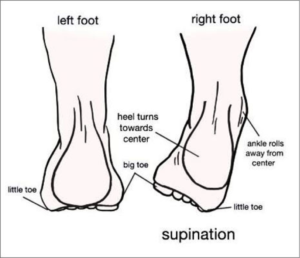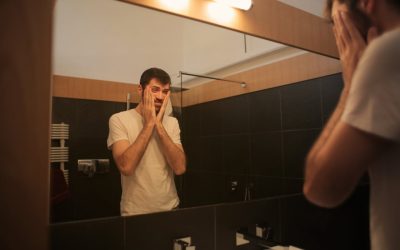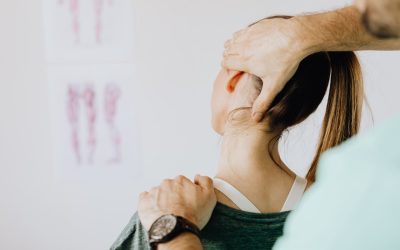Could Your Legs and Feet be the Foundation of Sciatic or Low Back Pain?
Some would argue that the 8th wonder of the world
is Stevie Wonder , I counter that,
I believe the 8th wonder
is the architecture
of the body
Have you ever wondered how you stand so well, being broad on top (shoulders) and tapering at the base (feet)? Let’s talk about feet and legs from this perspective and how they can affect the body – specifically the hips and low back.
For a physical structure, an upside down triangle is an architectural feat. The human design frame flipped the fundamentals of structural engineering upside down. And although it is marvelous for movement, it can get bad if you don’t know what’s in this article.
What is the Hallmark Characteristic of Man?
We usually think of our brains, or our opposable thumbs, as the hallmark characteristic that make us uniquely human. However, our overall structure is quite remarkable and only adds to our uniqueness. We’re the only true upright bipedal animal and the anatomy that gives us that vertical ability is less frequently mentioned than our brain or opposable thumb.
Let’s take a look and celebrate this fascinating design. No other animal has a foot quite like ours. Our heel is essentially the first foundation to our vertical uprightness. In addition, we are the only animals with a 5th lumbar vertebra. With vertical orientation now on our side, vision literally takes on a new level. Our mobility gains the freedom to turn and gyrate on a dime. We can climb, squat, crawl, jump, swim, tumble, reach, etc. We’re extremely versatile and it’s this revolution in architecture, this unique design that makes us so fascinating.
There are benefits and struggles
to the upside down
Triangle
If you’ve been struggling with sciatica or low back pain (LBP) you may have tried acupuncture, massage, yoga, Pilates, etc. Many therapies have been effective in treating low back pain. While none can claim a monopoly on success, I think considering structural imbalances is a logical and important point to explore. The main reason is I like to give clients take away information they can utilize immediately. The default question I ask myself is, “Is this a simple structural issue?” If the answer is affirmative then there are simple and noninvasive solutions to eliminating pain. Let’s deconstruct this dilemma.
Here are 4 things I’ve observed in my office related to leg imbalances:
- Leg patterns are often overlooked in the story of lower back pain (LBP).
- Check to see if your low legs and calves are tight, I find they often are. Implementing a routine of stretches may very likely be helpful.
- Tight hamstrings are also a common culprit, but a deeper question is, “Have your hamstrings migrated from their home position of the back leg compartment?” For instance, when you walk do your legs externally rotate driving your hamstrings to where the inner thighs should be? If so, the solution could be quite simple.
- Are the feet functioning properly?
The single greatest problem in sciatica and LBP that comes
to my mind when I envision
an upside down
Triangle is
Rotation
The 4 points mentioned above can be summarized in that single word – ROTATION– or twisting.
With your sciatica or LBP, are you experiencing concomitant rotation, tightness, or pain in your legs or feet? If so, there maybe a correlation between your lower extremities and your pain. Most people overlook this when pain is intense, but I find it a common theme. Once again, stretching hamstrings is a good thing to try here.
What’s the relationship between tightness in your legs and sciatic/lower back pain? You may be over using single parts. It’s rare that all muscles are equally tight, usually there’s an imbalance. That imbalance trickles down to your feet ultimately making a small base smaller and driving the tension of stability towards your hips and low back.
As bipeds with little connection to the ground to begin with, when our legs tighten and rotate our feet begin to lose full healthy contact and ambulatory function. Ideally if our legs, knees, and feet tracked in a straight forward, straight back motion without rotating we’d fare better. The problem that rotation introduces is that feet themselves have as many as half the bones of the entire body. That’s a small area of sophistication. Foot function in walking should be a full complex orderly movement, but when there are strong rotations the complexity becomes oversimplified, which compromises overall movement and wholesome function. For instance, in a leg that chronically rotates outward you will see a wearing out of the outside heel of the shoe, a sign that a very specific part of the foot is favored rather than using the whole foot. If you’re following the mental image I’ve drawn here of rotated parts, now visualize the what’s happening to the nervous system within. Essentially, the neural pathways are being strangled.
Here’s a scenario: You sit for a living. This probably means you get into and out of your chair the same way each time. To you it’s nothing more than sitting, but on a deeper level subtle rotation is happening, and those nerves are being squeezed. What do I mean by this? Sit down, now look down at your legs, are they crossed, splayed out, or are your feet connected to the ground in a full balanced way and are your legs maintaining a healthy alignment? Most likely in time they begin to cross or rotate internally or externally. These rotations are a neurological pattern of use and they aren’t limited to your legs but continue on down the line to your feet as well as into your hips and low back. Imagine a twist in your legs creating a pattern down to your feet, now your feet aren’t connecting flat to the ground.
The upside down triangle literally ends at a point as you see in this supinated right foot, the little toe or the lateral arch becomes the only connection to the floor. Balanced function of the foot is lost and sensory input becomes compromised. The anatomy of the foot comes into partial use, and that’s a pattern where you’re either experiencing symptoms now or creating that affinity for them in the future.
Make a healthy dose of mobility your best friend and infuse that with strength, a balance between the two is best but we often jump right into activities before we’ve developed a decent degree of mobility.
Awareness is the first level where
We can create change
In ourselves.
I find myself supinating my feet often, and in times when I would least expect it, like, when removing my shoes as I enter into my house.That’s a time I go really deep into that pattern of supination ultimately reinforcing the twist deep into my nervous system. No lack of correlation there to sciatic pain and LBP, you think? For a second, use your imagination as you look at the picture above, now imagine what the right leg might look like versus the left and bring that image up to the hip and now the low back.
PROBLEMATIC!!!!
Instead of connecting and being supported through your entire foot
You’ve lost your full base of support and it has turned
Into you using a very selective part
Of your foot to bear
Weight and
Function
Your sciatic/low back pain may be the endpoint that is affected when lower extremities rotate. Rotation is like a kink in a hose, or a twist wringing out a wet rag.
I hope this anatomy info was helpful, keep that in mind as we move on to a solution I like to give my clients. It’s the first most basic one so hopefully it’ll help you too.
Solving the Structural
Puzzle of the
Triangle
Disrupt your neurological patterns – do things different! Solutions are always found in doing things different. Here’s my go to cue for Sciatic and LBP: walk pigeon toed.
Try it out, tell me what you think. I’ve been trying to get my wife to understand this for years. This past weekend we took refuge from the inland heat at the beach. She was trying to follow my footsteps in the sand, and said, “you walk with your feet rotated out.” Ahhh, I didn’t think of that, and I had been experiencing LBP for most of the week. It’s gone now. Go pigeon toe. Disrupt your nervous system pattern a bit, your back might thank me for it.
Be body/brain brilliant!






0 Comments